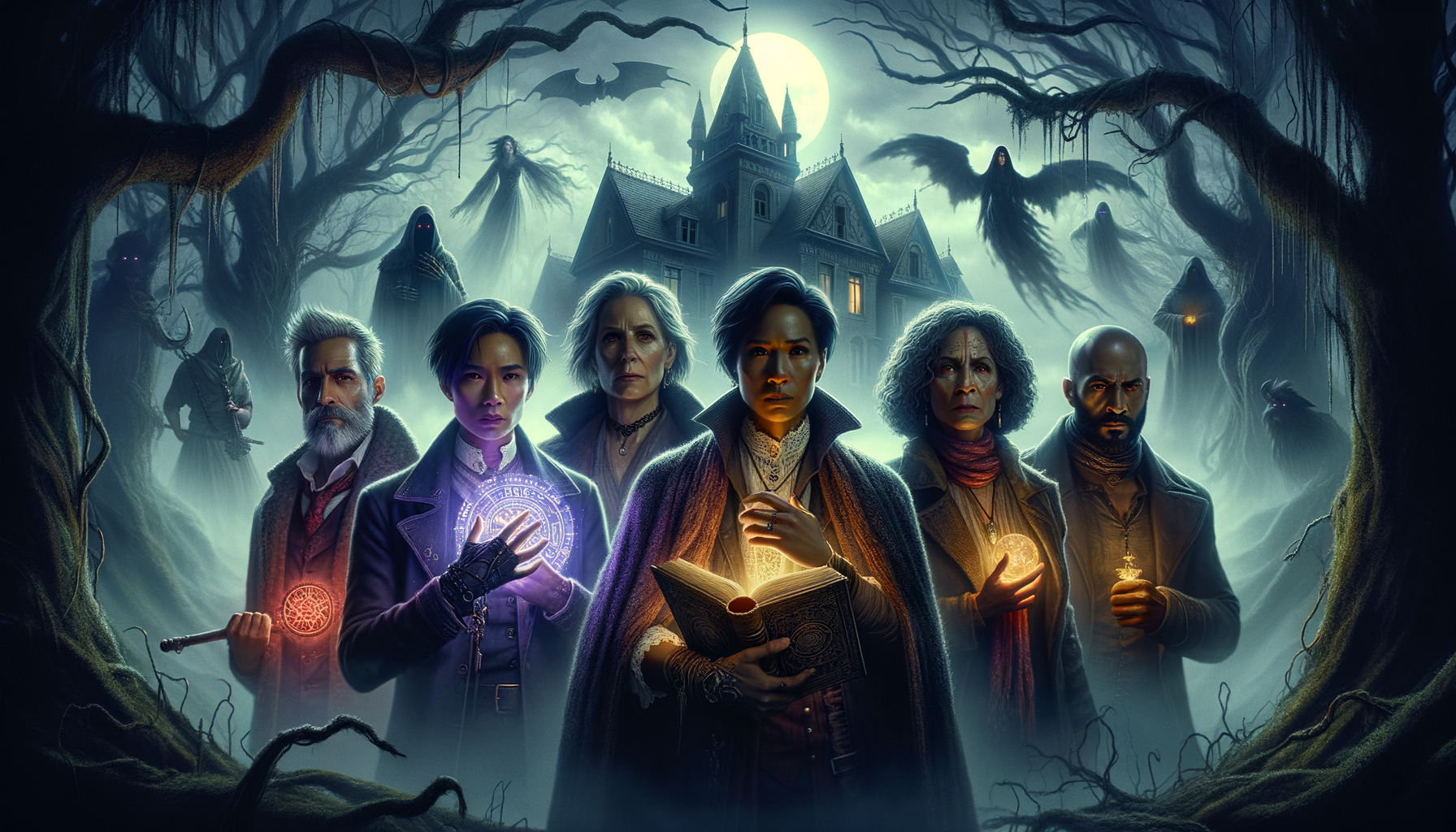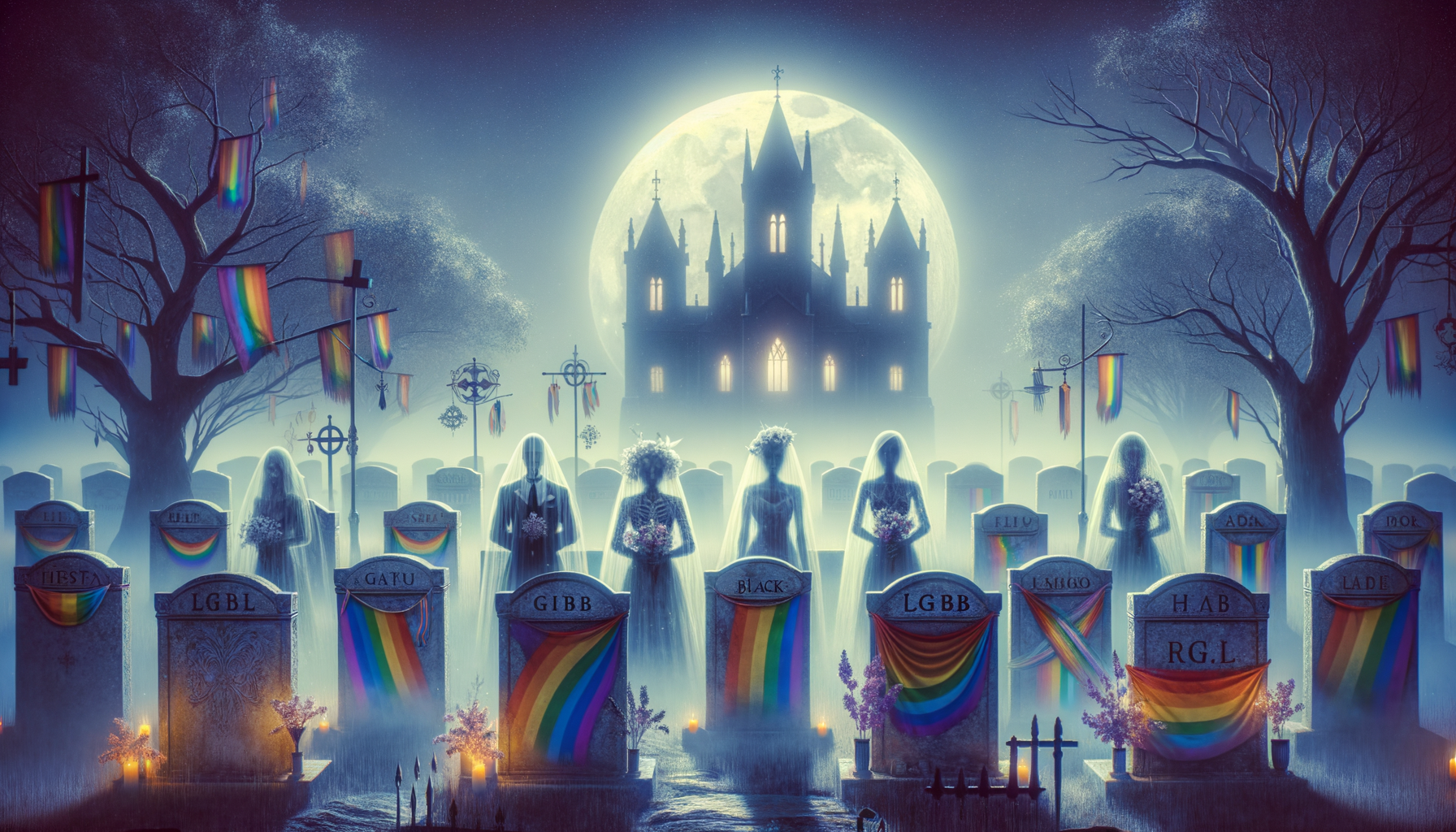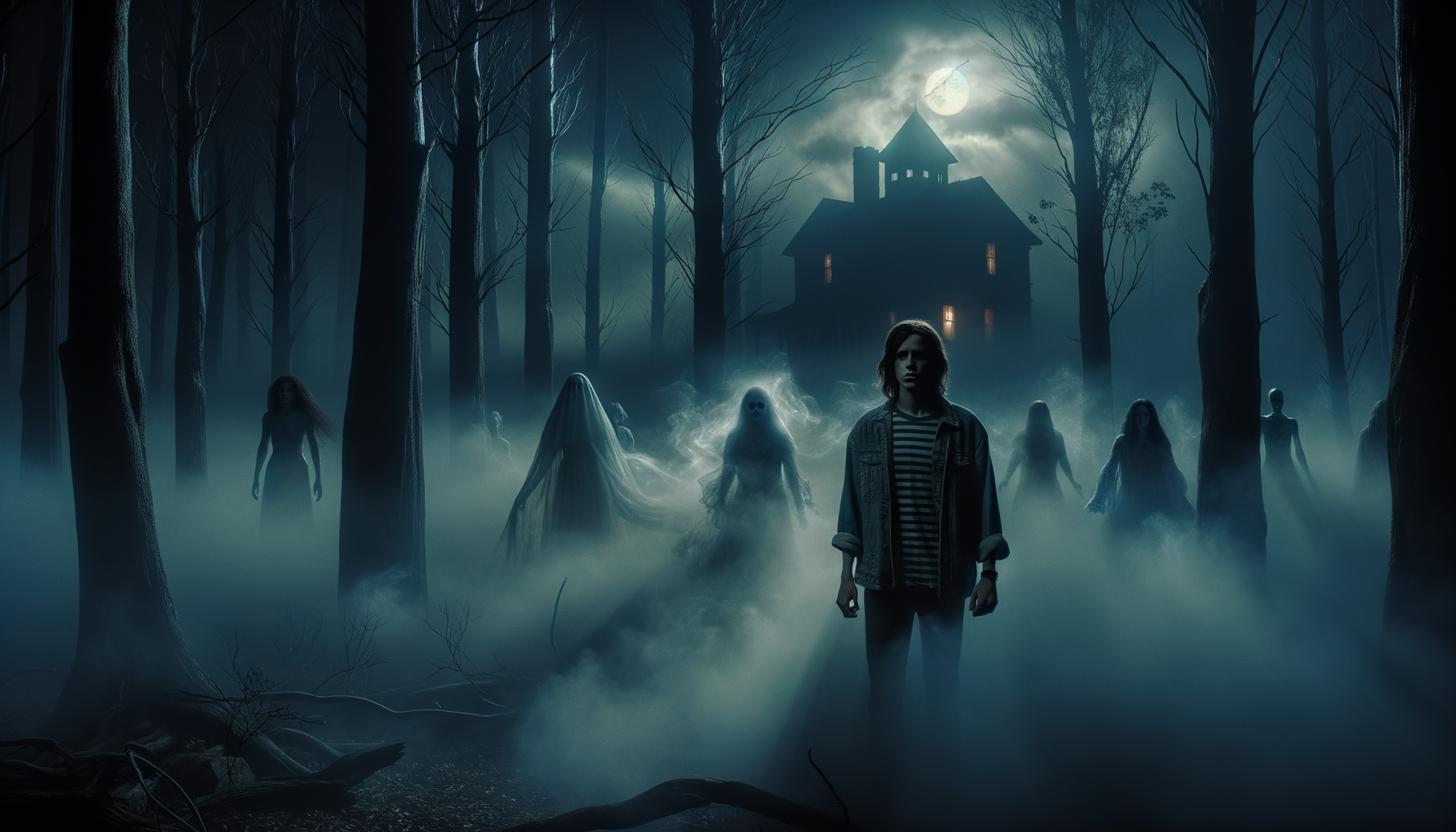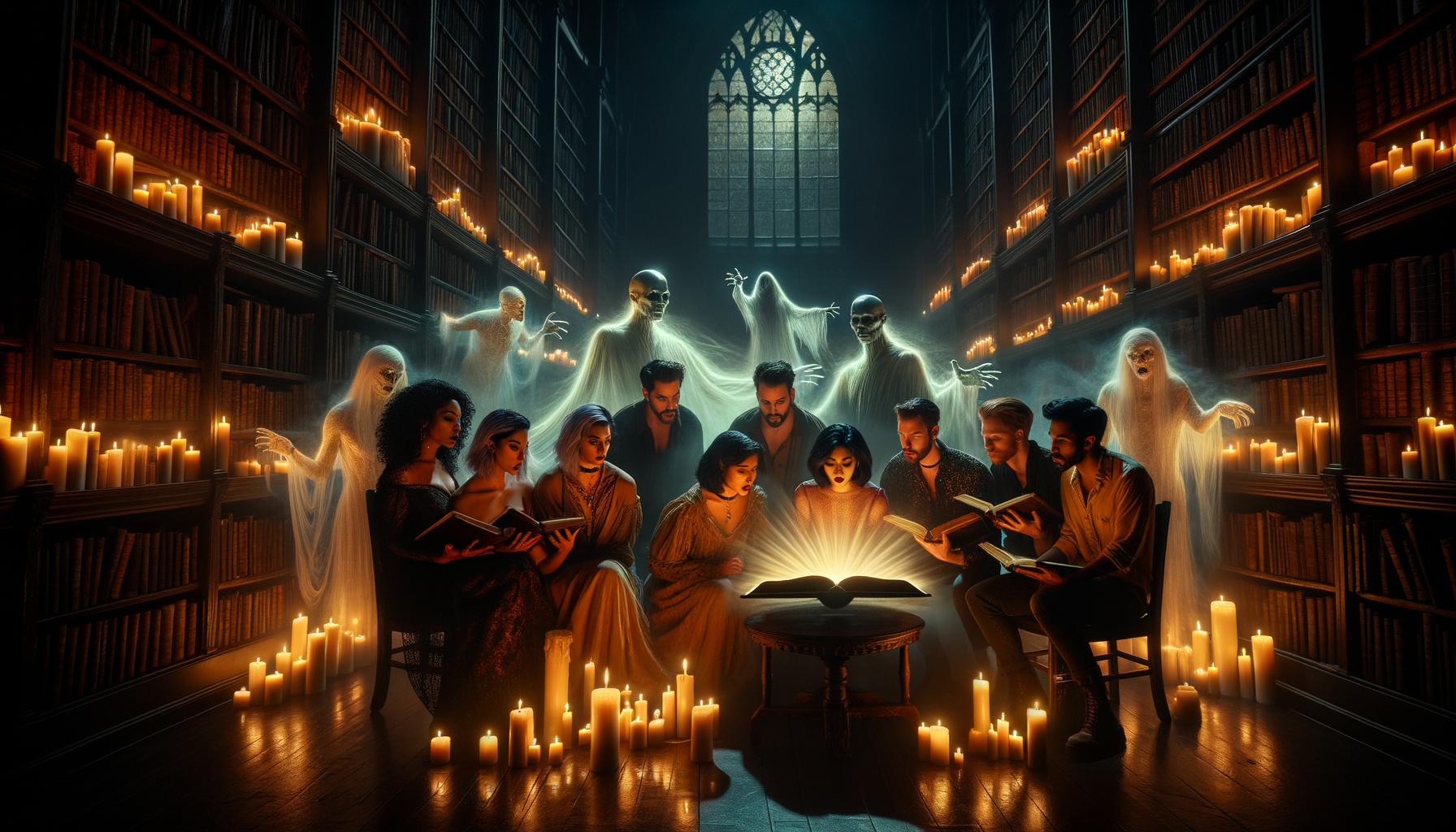Ready to get chills down your spine? The intersection of LGBT narratives and paranormal horror in 2024 offers a unique lens through which we can experience fear, suspense, and the supernatural. Imagine ghostly tales and eerie occurrences infused with the rich diversity of LGBT characters and stories. You’re about to plunge into a world where the eerie and the inclusive converge, offering some of the most captivating horror narratives around. Did you know that LGBT paranormal horror books have surged in popularity by 35% over the last year? It’s time to explore why these stories are not just frightening, but also groundbreaking.
The Evolution of LGBT Narratives in Horror
Historical Perspective: Early Representations of LGBT Characters in Horror
In the early days of horror, LGBT characters often found themselves cast in the shadows, portrayed as villains or tragic figures. These early representations were fraught with stereotypes and negative connotations. The portrayal of LGBT characters was often used to heighten the sense of ‘otherness’ and fear, reinforcing societal prejudices of the time. Characters like Dracula’s Renfield or the ambiguous sexuality of Dr. Jekyll and Mr. Hyde hinted at underlying themes of repression and deviance.
Modern Shifts: Inclusive Storytelling and Bold New Voices
Fast forward to today, and the narrative landscape has transformed significantly. Modern horror writers are embracing inclusive storytelling, bringing to the forefront complex and multifaceted LGBT characters. These stories no longer rely on harmful clichés but instead explore rich, authentic experiences. Writers like Clive Barker and Poppy Z. Brite have paved the way, offering nuanced depictions that resonate deeply with readers.
Notable Authors and Their Contributions to the Genre
Authors such as Carmen Maria Machado, who blends horror with a keen exploration of gender and sexuality, and Stephen Graham Jones, whose work often includes diverse characters, have made significant contributions. Their stories challenge traditional horror tropes, offering fresh perspectives and deep emotional resonance.
Top LGBT Paranormal Horror Books of 2024
Spotlight on Bestselling Novels That Blend LGBT Stories with Paranormal Horror
2024 has seen a surge in paranormal horror novels that seamlessly integrate LGBT narratives. Titles like “The Haunting of Hillcrest” by Alex North and “Spectral Lovers” by Tamsyn Muir have topped the charts, captivating readers with their chilling plots and deep character development.
Brief Summaries and Analyses of Key Themes
“The Haunting of Hillcrest” revolves around a haunted mansion where the secrets of its previous LGBT inhabitants unravel through spectral encounters. Themes of love lost and found, identity, and acceptance are woven into the eerie atmosphere. “Spectral Lovers” explores a world where ghosts of past lovers seek closure, blending themes of regret, redemption, and eternal love.
Reader Reviews and Community Feedback
Readers have praised these novels for their authentic representation and gripping storytelling. Online communities and book clubs are abuzz with discussions, highlighting the emotional depth and cultural relevance of these stories. The feedback underscores a growing appetite for diverse narratives in horror.
Diverse Characters and Their Impact
LGBT Protagonists: Breaking Stereotypes in Horror
LGBT protagonists in recent horror novels are breaking free from traditional molds. Characters like the fearless vampire hunter in “Blood Moon Rising” or the empathetic ghost whisperer in “Echoes in the Dark” are redefining heroism in the genre. These protagonists are celebrated for their courage, complexity, and relatability.
Representation of Same-Sex Relationships in Eerie and Unsettling Contexts
Same-sex relationships are being explored within the unsettling contexts of haunted houses, cursed objects, and supernatural entities. These narratives delve into the dynamics of love and fear, offering a rich tapestry of emotional and psychological depth. Relationships are portrayed with authenticity, adding layers of tension and poignancy to the horror.
Intersectionality: Analyzing Diverse Characters Beyond Sexual Orientation
Intersectionality plays a crucial role in modern horror, with characters representing a variety of backgrounds, races, and identities. This multifaceted approach enriches the narrative, providing a broader spectrum of experiences and challenges. Stories like “The Witching Hour” incorporate themes of racial and gender identity, enhancing the complexity and resonance of the horror.
Setting the Scene: Haunting Places and Atmospheres
Gothic Mansions, Haunted Forests, and Urban Legends with an LGBT Twist
Settings play a pivotal role in creating the eerie atmospheres that define paranormal horror. Gothic mansions with dark histories, haunted forests where spirits linger, and urban legends reimagined with an LGBT twist are captivating readers. These settings are not just backdrops but integral to the narrative, enhancing the sense of dread and mystery.
Unique Cultural Settings and Their Influence on the Horror Narrative
Unique cultural settings, from the misty moors of Scotland to the bustling streets of Tokyo, bring fresh perspectives to horror. The cultural nuances and local legends add depth and authenticity, making the horror more immersive and relatable. Stories set in these diverse locales offer a rich blend of fear and fascination.
Visual Storytelling: Stunning Cover Arts and Chilling Illustrations
Visual storytelling complements the written word, with stunning cover arts and chilling illustrations drawing readers in. The artwork often reflects the themes and mood of the story, adding an extra layer of intrigue. From dark, brooding covers to intricate illustrations of spectral encounters, the visual elements enhance the overall experience.
Themes and Motifs in LGBT Paranormal Horror
Love, Fear, and Identity: Recurring Themes That Resonate
Recurring themes of love, fear, and identity are central to LGBT paranormal horror. These stories explore the complexities of human emotions, the struggle for acceptance, and the fear of the unknown. The interplay of these themes creates a rich, emotional landscape that resonates deeply with readers.
The Supernatural as a Metaphor for LGBT Struggles and Triumphs
The supernatural often serves as a metaphor for the struggles and triumphs of the LGBT community. Ghosts, vampires, and other supernatural entities symbolize the fears and challenges faced by LGBT individuals, as well as their resilience and strength. This metaphorical approach adds layers of meaning and depth to the horror narrative.
Psychological Horror: Exploring Inner Demons and External Fears
Psychological horror delves into the inner demons and external fears that haunt characters. The exploration of mental and emotional turmoil, coupled with supernatural elements, creates a compelling and terrifying experience. This subgenre allows for a deep, introspective look at the human psyche, making the horror more personal and impactful.
The Growing Community of LGBT Horror Fans
Online Forums and Social Media Groups Passionate About the Genre
The community of LGBT horror fans is thriving, with online forums and social media groups providing platforms for discussion and connection. These spaces allow fans to share recommendations, discuss themes, and connect with like-minded individuals. The passion and enthusiasm in these communities are palpable, fostering a sense of belonging and shared interest.
LGBTQ+ Horror Conventions and Festivals
LGBTQ+ horror conventions and festivals are gaining popularity, celebrating the genre and its creators. These events offer opportunities for fans to meet authors, attend panels, and participate in discussions. They provide a space for the community to come together, celebrate their love for horror, and support diverse voices in the genre.
Author Interviews and Fan Interactions
Author interviews and fan interactions are integral to the growing community. Writers engage with their readers through Q&A sessions, book signings, and social media interactions. These exchanges allow for a deeper connection between authors and fans, enhancing the overall experience and fostering a supportive and engaged community.
Conclusion
As we journey through the eerie and inclusive world of LGBT narratives in paranormal horror, it becomes clear that these stories are much more than just spooky tales. They offer a powerful way to explore identity, fear, and resilience. So grab a book, turn off the lights, and get ready to be haunted in ways you never imagined. Share your favorite LGBT paranormal horror stories with us, and don’t forget to keep your lights dim… you never know what’s lurking in the shadows!




